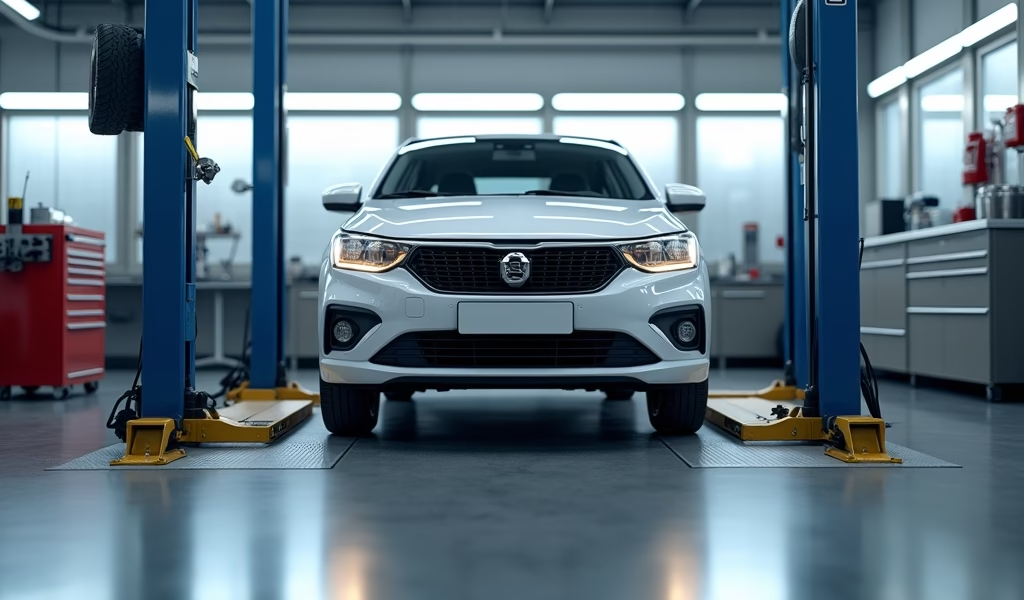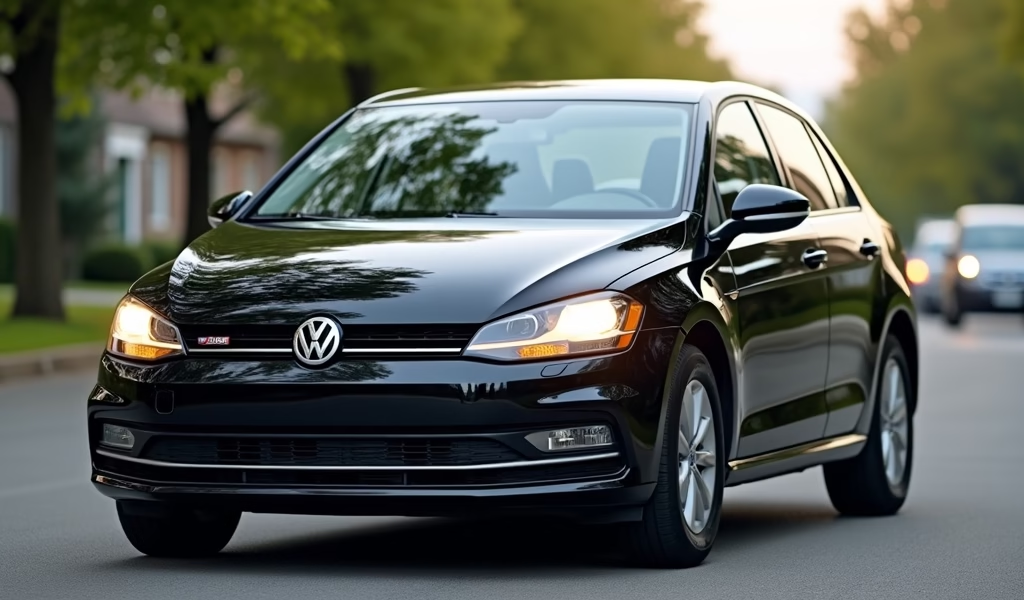Overview
This article provides a mechanic’s expert guidance on maintaining affordable cars through consistent preventative maintenance, including fluid checks, tire care, battery maintenance, and interior preservation. The core message emphasizes that affordability doesn’t mean compromise, as budget-friendly vehicles like Honda Civic and Toyota Corolla can deliver exceptional longevity when owners follow proper maintenance schedules and treat their vehicles as investments rather than disposable items.
Table of Contents
- Finding Your Perfect Affordable Car: A Mechanic’s Perspective
- Why Proper Car Care Makes All the Difference
- Preventative Maintenance: The Foundation of Affordable Car Ownership
- The Vital Fluids: Keeping Your Affordable Car’s Lifeblood Flowing
- Tire Care Essentials: Where the Rubber Meets the Road
- Battery Maintenance: Keeping the Heart of Your Car Beating
- Interior Care: Preserving Your Car’s Value from the Inside Out
- Conclusion: Getting the Most from Your Affordable Car
- Frequently Asked Questions
Finding Your Perfect Affordable Car: A Mechanic’s Perspective
After 20 years under the hood, I’ve seen firsthand how the right care transforms even the most budget-friendly vehicles into reliable daily drivers. Today’s top affordable cars deliver impressive value when properly maintained – something many owners overlook. I’m talking about models like the Honda Civic, Toyota Corolla, and Kia Rio that combine attractive price points with surprising durability.
What makes these vehicles stand out isn’t just their sticker price; it’s their response to consistent care. In my garage, I’ve seen budget models outlast luxury vehicles simply because their owners followed proper maintenance schedules. The truth is, affordability doesn’t have to mean compromise when you know how to properly care for your investment.
Before diving into specific maintenance tips, it’s worth noting that many quality affordable vehicles now come with advanced safety features and impressive warranties that were once exclusive to premium brands. This democratization of automotive quality means budget-conscious buyers have more excellent options than ever before.
Why Proper Car Care Makes All the Difference
The difference between a budget car that lasts 200,000 miles and one that breaks down at 80,000 often comes down to how it’s maintained, not its original price tag. In my workshop, I’ve rescued countless affordable vehicles from early retirement – usually because a simple maintenance routine was neglected.
Regular maintenance isn’t just about preventing breakdowns; it’s about preserving value. Even the most economical new models retain significantly more value when they’ve been properly cared for. Consider this: a $16,000 Hyundai Accent with documented regular maintenance might sell for thousands more than the same model with spotty service history.
Beyond financial considerations, proper maintenance ensures safety and reliability – two factors that shouldn’t be compromised regardless of your vehicle’s price point. The peace of mind that comes with knowing your affordable car won’t leave you stranded is, frankly, priceless.

Preventative Maintenance: The Foundation of Affordable Car Ownership
The first rule in my shop is simple: preventative maintenance saves money – period. This principle applies doubly to affordable vehicles, where minor issues can quickly escalate into major expenses if ignored. Let’s break down what preventative maintenance actually means for your budget-friendly ride.
Oil changes remain the cornerstone of car care. For most top affordable cars, I recommend changing your oil every 5,000-7,500 miles depending on your driving habits and manufacturer recommendations. Using high-quality oil appropriate for your specific model can extend engine life significantly. Don’t be tempted to save a few dollars on bargain oil – your engine will pay the price later.
Next, follow your vehicle’s maintenance schedule religiously. These aren’t suggestions; they’re requirements for longevity. According to a study by AAA, skipping scheduled maintenance can cost owners thousands in additional repairs over time.
Here’s a simple preventative maintenance schedule I recommend for most affordable cars:
- Every 3-6 months: Oil and filter change, tire rotation, fluid level checks
- Every 12 months: Air filter replacement, brake inspection, battery check
- Every 24 months: Coolant flush, transmission service (if applicable)
- Every 36 months: Spark plug replacement, fuel system cleaning
What makes this approach effective is consistency. I’ve seen $12,000 Nissan Versas outlast $40,000 luxury sedans simply because their owners never missed a service interval. Your affordable car might not have all the bells and whistles, but with proper preventative care, it can deliver remarkable reliability.
The Vital Fluids: Keeping Your Affordable Car’s Lifeblood Flowing
Every vehicle, regardless of price point, relies on several critical fluids to function properly. In affordable cars, these fluids are particularly important since component replacement often represents a higher percentage of the vehicle’s total value.
Engine oil is your first priority, but don’t stop there. Transmission fluid deserves special attention in affordable vehicles, which often feature simpler transmissions that rely heavily on clean fluid. In many affordable auto models, transmission fluid changes can prevent failures that might cost more than half the car’s value to repair.
Brake fluid absorbs moisture over time, which lowers its boiling point and compromises braking performance. I recommend checking it every oil change and replacing it every two years regardless of mileage. This simple step can prevent costly brake system repairs down the road.
Coolant (antifreeze) protects your engine from both freezing and overheating while preventing internal corrosion. Modern coolants last longer than older formulations, but they still need regular inspection and replacement every 30,000-60,000 miles for most affordable models.
Don’t forget these often-overlooked fluids:
- Power steering fluid: Check monthly for leaks and proper level
- Windshield washer fluid: Keep full with season-appropriate formula
- Differential/transfer case fluid: Often forgotten but critical in AWD/4WD models
Many fluid-related problems in affordable cars start with minor leaks that go unnoticed. Make it a habit to check your parking spot for any fluid spots. A small leak today could be a major repair bill tomorrow, especially in budget-friendly vehicles where component replacement costs often represent a significant percentage of the car’s value.
Tire Care Essentials: Where the Rubber Meets the Road
In affordable vehicles, tire care delivers exceptional return on investment. Proper inflation alone can improve fuel economy by up to 3% according to the U.S. Department of Energy – significant savings for budget-conscious drivers.
I recommend checking tire pressure monthly and before any long trip. Underinflated tires wear faster on the outside edges, while overinflated tires wear more quickly in the center. Either scenario shortens tire life considerably. Your vehicle’s recommended tire pressure can typically be found on a sticker inside the driver’s door jamb.
Rotation is equally important. In front-wheel-drive affordable cars (which constitute most of the market), front tires handle both steering and most of the power delivery, causing them to wear faster. Regular rotation every 5,000-7,000 miles ensures even wear across all four tires, extending their usable life.
Alignment often gets overlooked, but it’s crucial for tire longevity and handling, especially in lighter, more affordable vehicles. I suggest having your alignment checked annually or whenever you notice uneven wear patterns or pulling to one side. Many affordable car owners skip this step, but doing so can cost hundreds in premature tire replacement.
Quality matters too. While budget tires might seem like the obvious choice for an affordable car, mid-range options often provide better value through longer life, better fuel economy, and improved handling. The sweet spot isn’t always the cheapest option upfront.

Battery Maintenance: Keeping the Heart of Your Car Beating
Battery failure remains one of the most common reasons affordable cars end up in my shop. The good news? Basic battery maintenance is something any owner can handle with minimal tools or expertise.
First, keep those terminals clean. Corrosion on battery terminals creates resistance that makes your starter work harder and can prevent proper charging. A simple mixture of baking soda and water applied with an old toothbrush works wonders for cleaning terminals, followed by a light coating of petroleum jelly to prevent future corrosion.
Next, be mindful of parasitic draws – electrical components that continue using power when your car is off. In affordable vehicles, which often have simpler electrical systems, a phone charger left plugged in or an interior light that doesn’t shut off can drain a battery overnight. Make a habit of checking that everything’s turned off when you exit your vehicle.
Modern batteries generally last 3-5 years, but extreme temperatures can shorten their lifespan considerably. If you live in a climate with very hot summers or cold winters, consider having your battery tested annually after it reaches three years of age. Many auto parts stores offer this service for free.
For those in extremely cold climates, a battery tender (maintainer) is an excellent investment for affordable vehicles that aren’t driven daily. These inexpensive devices keep your battery optimally charged during periods of non-use, extending its life considerably.
Interior Care: Preserving Your Car’s Value from the Inside Out
Interior maintenance might seem purely aesthetic, but it significantly impacts resale value and can prevent costly repairs, especially in affordable vehicles where interior materials may be less durable than in luxury models.
Dashboard protection is paramount. UV damage from sunlight can cause cracking and fading, particularly in affordable cars with simpler interior materials. A quality sunshade costs under $20 but can prevent hundreds in dashboard damage. Similarly, regular conditioning of vinyl surfaces with appropriate products prevents cracking and maintains appearance.
Seat care varies by material. For cloth seats common in affordable vehicles, prompt stain treatment and regular vacuuming prevent permanent damage and odors. For those with leatherette or vinyl seats, regular cleaning and conditioning prevent the cracking that often occurs in budget-friendly synthetics.
Floor protection is especially important during winter months. Salt and moisture can damage carpeting and eventually lead to floor pan rust – a serious issue in many affordable cars with simpler undercoating. Quality all-weather floor mats represent one of the best value-protection investments you can make.
Don’t overlook regular cleaning of air vents and cabin air filters. These components affect both comfort and health, and replacing a clogged cabin air filter can improve heating and cooling efficiency – especially important in affordable cars that may have less powerful climate systems.
Conclusion: Getting the Most from Your Affordable Car
After two decades in the garage, I’ve learned that the gap between top affordable cars and their more expensive counterparts often comes down to care more than engineering. With the seven maintenance areas we’ve covered – preventative maintenance, fluid checks, tire care, battery maintenance, and interior preservation – even the most budget-friendly vehicle can provide years of reliable service.
Remember that consistency trumps perfection. It’s better to change your oil regularly at 5,500 miles than to aim for 5,000 miles and end up going 8,000 because you got busy. Set calendar reminders for regular maintenance tasks or use one of the many free vehicle maintenance apps available today.
The most successful affordable car owners I’ve worked with share one trait: they treat their vehicles like investments rather than disposable goods. That mental shift – from seeing maintenance as an expense to viewing it as value protection – makes all the difference in how long your affordable car will serve you and how much it will be worth when it’s time to move on.
Whether you’re driving a Toyota Yaris, Hyundai Accent, Kia Rio, or any other budget-friendly model, these care principles apply universally. The money you invested deserves protection, and with these straightforward maintenance practices, your affordable car can deliver exceptional value for years to come.
Frequently Asked Questions
What defines a car as “affordable”?
Generally, affordable cars have starting MSRPs under $20,000. They typically prioritize reliability and fuel efficiency over luxury features and high performance.
Which affordable car brands have the best reliability ratings?
Toyota, Honda, and Kia consistently rank highest for reliability in the affordable car segment. These brands often outperform luxury makers in long-term dependability studies.
How often should I service my affordable car?
Follow your owner’s manual schedule, which typically recommends oil changes every 5,000-7,500 miles. Other service intervals vary by component and driving conditions.
Do affordable cars cost less to maintain than luxury vehicles?
Yes, affordable cars typically have lower maintenance costs due to widely available parts and simpler systems. Annual maintenance costs average $300-600 compared to $800+ for luxury vehicles.
Can aftermarket parts damage my affordable car?
Quality aftermarket parts from reputable manufacturers are generally safe for affordable vehicles. However, OEM (Original Equipment Manufacturer) parts often provide better fit and longevity for critical components.

